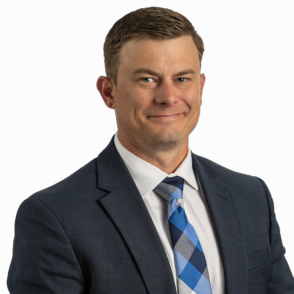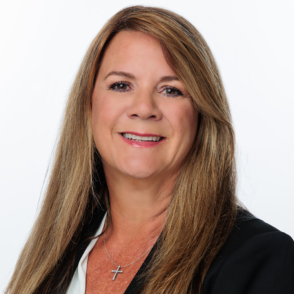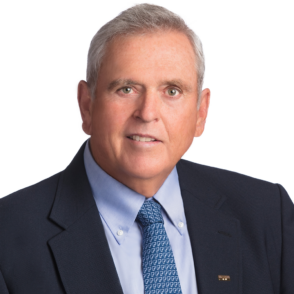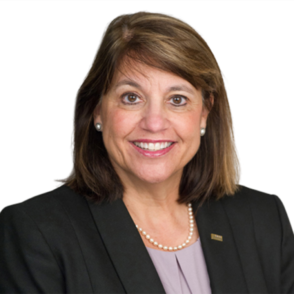By Paul G. Smith, Corporate Senior Vice President, Carrier Relations, H.W. Kaufman Group
Following the release of our Burns & Wilcox Property & Casualty Market Overview and Forecast: Eye on 2021 report last quarter the already challenged Commercial and Personal insurance marketplace was greeted with yet another extraordinary event—Winter Storm Uri (February 13-17). The widespread impact resulted in over 170 million Americans being placed under various winter weather alerts. We will delve into Uri throughout the context of this forecast as it truly impacted such a wide swath of the marketplace.
The resiliency of the global insurance industry is being tested from all angles during a time when it was essentially resetting expectations and reconsidering its approach to traditional perils. As the marketplace was deeply engaged in a return to long-term sustainable profitability—following over a decade of dwindling rates, expanding policy coverages, and unacceptable loss ratios—it was greeted with a global pandemic last year. While 2021 began with optimism surrounding vaccinations to thwart COVID-19, it was dealt yet another blow, Winter Storm Uri. However as we have become accustom the insurance industry will withstand that too.
To that end, this forecast will more deeply opine on several niche areas of the global marketplace such as Transportation, Environmental, Flood, and Professional Healthcare—while also considering the most severely impacted lines impacted by Winter Storm Uri. We will also delve into views on the Canadian marketplace with insights from our subject matter experts from throughout Canada as well as an overview of how the London and Lloyd’s markets impact transactions throughout all facets of our business.
We are unwavering in our commitment to providing transparent insights into the marketplace through the words of our extensive network of thought leaders who are in the marketplace daily. Their experiences, interactions, relationships and comments provide the foundation of this forecast, providing unparalleled insights.
RATE
The Wholesale and Specialty Insurance Association (WSIA) recently released its 2020 statistics of surplus lines premium as reported by the U.S. Surplus Lines Service and Stamping Offices indicating 14.9% growth over 2019 despite shrinking item counts. The stamping offices provide a solid indication of the overall US surplus lines market with A.M. Best indicating they capture almost two thirds of all surplus lines premium volume. Some states far surpassed the average with significant increases such as California at 22.68%, Utah 37.07%, Mississippi 21.29% and Oregon at 21.77%.
More recently, a combination of industry sources reported U.S. commercial rate increases of 7% on average in Q1 of ‘21. Digging into the details of course reflect certain lines of business significantly outpacing the average:
- Umbrella +14%
- Directors & Officers + 11.6%
- Professional Liability +11.3%
- Commercial Auto + 8.7%
- Commercial Property + 8.6%
Further insights include Habitational and Transportation (as detailed in finer detail further in this report) seeing the highest rate increases, while larger accounts are priced modestly higher than medium and small accounts. We do not anticipate much change in this regard for the balance of the year with rate increases continuing throughout 2021.
CAPACITY
Capacity by in large is not an issue, however as previously reported greater participation among a panel of insurers may be needed to fulfill larger limit requirements. Insurers are increasingly more deliberate in deployment of aggregate in pursuit of the never ending quest of portfolio diversification through careful management of participation in various lines in various geographies.
Although less active than January 1st and July 1st treaty reinsurance renewals, we understand April 1st renewals resulted in no capacity shortage although rate increases were abundant. Carriers will continue to be opportunistic and deploy capacity where they anticipate the greatest return, so while some may be exiting particular lines of business, states, industries and the like, that should in no way translate to a shortage of capacity.
TERMS & CONDITIONS (T&C)
The flight to quality as highlighted in our report last quarter continues with most business plans including continued diligent efforts of insurers managing coverages carefully. Policy terms and conditions will accurately reflect risk characteristics through close management of deductibles, sub-limits, exclusions and other clauses.
The industry in many ways lost its direction by allowing unrelated coverages to creep into standard policies as well as specialty lines into the admitted or conventional marketplace. This creep over more than a decade has fundamentally changed insurers approach to the significant importance of managing terms and conditions more proactively than we have seen in decades. Rate alone cannot bring the industry back to a sustainable path of profitability without being looked at in conjunction with risks being underwritten attentively in the correct marketplace.
NEW MARKET ENTRANTS
Startups:
Capital continues to flow into the bullish insurance marketplace with a strong emphasis on the U.S. specialty sector in the form of Insurers, MGA, MGU and fronting capabilities. Names highlighting this area include:
- G58 – Former Navigators CEO Stan Galanski is bringing together former colleagues and other industry executives on this E&S start-up that is likely to resemble a hybrid model with an MGA platform and access to its own paper through the backing PE firm Lindsay Goldberg. This hybrid structure is a growing trend in this sector that combines an MGU underwriting platform with access to in-house paper supported by reinsurance capacity.
- Upland Capital Group – Todd Hart, James Damonte, Mark Morrison, and Pamela Byron-Button have teamed up to launch this new E&S Carrier with a reported $200mm backing from Newlight Partners along with their personal investment. Upland is said to be focusing on a diverse portfolio of E&S casualty, property and specialty insurance products, with its initial focus on excess casualty distributed exclusively through select wholesale brokers.
Expanded Appetite:
Many of the class of 2020 startups are now spreading their wings and underwriting business. Market conditions are perfect for a new organization to commence underwriting or existing firms to expand their appetite into areas where terms, conditions, rate and other criteria are such that a reasonable return can be expected. Examples include:
- Inigo – This class of 2020 start-up led by former Hiscox CUO Richard Watson started writing business effective January 1, 2021 after securing a reported $800mm in capital from JC Flowers & Co, Stone Point, Enstar, Oak Hill advisors and the Qatar Investment Authority to name several. Specific emphasis has been placed on management liability lines with recent heavy weight recruits including Ed Whitworth, Craig Knightley and Matthew Rolph joining Inigo.
- Convex – This carrier has been one of the most active since its inception in 2019 under the leadership of industry veteran Steve Catlin. Their most recent expansion includes a further investment from Sixth Street who pumped $500mm into London-Bermuda carrier bringing its capital base up to a reported $3.2B. Catlin recently stated “at times of stress, the industry’s customers need quality balance sheets, stable capacity and sensible underwriting.” We could not agree more and are actively following this rapidly expanding insurer as it continues its trajectory.
Q1 OVERVIEW & Q2 FORECAST (US)
Following a 2020 characterized by COVID-19, rising numbers of claims, and disastrous hurricanes and record-setting wildfires in the U.S., the first quarter of 2021 was expected to be quieter. Then a power outage that gripped the entire state of Texas for parts of two weeks caused an estimated $18-25 billion in losses.
Despite that and the inevitable pushback within the industry, 2021 is likely to see an increased awareness of the true costs of insurance in both the personal and commercial sectors while both service and relationships continue to differentiate as the market tightens.
Our industry leading subject matter experts dissected the marketplace and provided insights on the Burns & Wilcox Eye on Q2 2021: Specialty Insurance Overview webinar, hosted April 8, 2021. They provide further guidance as follows delving deeper into specific areas with advice and outlook.
Personal & Commercial CAT Property:
The statewide power outage in Texas has put a wrench into the start of the year, especially with “storm season” on the horizon. Cost estimates are between $18-25 billion, or at a higher total loss than was experienced following Hurricane Harvey in 2017. Aggregate is a precious commodity especially in coastal areas and rates are higher almost across the board given these recent disasters, says Bonnie Steen, Vice President, Managing Director, Burns & Wilcox, New Orleans, Louisiana.
Some domestic carriers have withdrawn from writing new business in coastal areas for both Personal and Commercial Property, Steen says. Other domestic carriers are either requiring non-renewals to be issued or are increasing their rates by anywhere from 20 to 60 percent. Agents are seeking higher all other perils deductibles to help offset rate increases. Wind deductibles are sometimes increasing as well. Meanwhile reinsurance rates are rising 5 to 20 percent on average.
Each Lloyd’s cover-holder, such as Burns & Wilcox, is held responsible for their own loss ratios, deductibles and more. With “boots on the ground” in London, Burns & Wilcox professionals are in constant contact with Lloyd’s brokers, a critical benefit with the lack of capacity, Steen said.
Unlike others, Burns & Wilcox has been able to gain additional aggregate in various CAT areas that has allowed us to bind and quote new business while offering renewals. This allows for greater flexibility in writing and retaining business even in such a challenging environment.
“Smaller, locally-owned wholesalers and even some national wholesalers have struggled with a loss of market access and capacity to write, Steen said. “It’s one of the many reasons why at Burns & Wilcox we are taking care of those partners who have been there for us in the past. There’s only a certain amount of aggregate coverage that is available and it is important that we continue to have the ability to bind business.”
One of the most significant implications of market trends in Personal Lines has been with Demotech rated companies, which often require a minimum amount of surplus and typically purchase a significant amount of reinsurance. We saw their growth accelerated after Hurricane Katrina. Today, Demotech companies comprise almost 60 percent of Personal Property coverage in Florida. As a result, they have been hit hard with catastrophic losses in coastal areas with some of these companies reporting combined ratios as high as 150 percent. Steen referenced examples where replacement coverage submissions have been received in recent days as regional carriers are exiting the CAT market.
The impact on the Personal Lines’ Property market could be devastating since some of these Demotech companies have to take significant rate increases, buy additional reinsurance at a higher cost, or withdraw from the market. With a severe storm season expected again this season, Steen anticipates the market hardening to continue.
For more information, click here to view our CAT Property Insurance video highlight.
Personal & Commercial Flood:
The National Flood Insurance Program (NFIP) managed by FEMA has been the predominant source of primary flood insurance in the U.S. since the late 1960’s. Originally, NFIP was developed as a short-term solution providing flood insurance for primary homes and commercial property via federal aid. In recent years, the market has shifted to include more private market options.
There are many reasons for this, says Brad Turner, Associate Vice President, National Product Manager, Flood, Burns & Wilcox, Morehead City, North Carolina. Sustainability is one as the increasing number of flood events has rendered the NFIP model financially obsolete, he said.
The increased availability of high-tech tools that more accurately pinpoint risk assessments for specific locations are redefining the risk model, giving an advantage to private options. No longer do carriers require a physical survey or traditional mapping to define risks and thereby premiums. This means that the pricing profile for any client is more accurate and competitive than what the NFIP can usually offer. However, market forces have led the NFIP to plan for the implementation of a newly redesigned rating approach, including the utilization of this technology.
Private flood options have allowed fewer exclusions, more add-ons, and extended limits and capacity, Turner said. The result is a more efficient means of reacting to the marketplace, driven by that available technology. It also leads to private insurance options providing more accurate pricing based on access to more precise risk profiles. This has been sorely needed for many years as climate change has accelerated, and property and population density has grown.
“We’ve also seen some legislative roadblocks removed for Private Flood Insurance, including the required acceptance of private flood by lending institutions, which helps market mobility. With private flood options, you typically see a broadening of coverage and more inclusive endorsements,” Turner said.
“For example, you can add replacement cost valuation across most occupancies. You also can obtain some write-ins with personal property coverage, especially as it applies to basements and enclosures. The private market is ultimately (allowing) for more competition and more options for the insured.”
Under the new NFIP Rating 2.0, reconstruction values will become an underwriting rating point of emphasis, and some high value coastal or exposed segments will experience unprecedented price increases using this new approach, Turner added. This will lead to some pushback within the market, but a greater understanding of pricing and awareness of exposure will emerge which is a net positive. As an aside, the NFIP does not consider replacement costs as a rating characteristic under the established system.
“The private flood market should have the opportunity to compete across a lot of segments it wasn’t able to before because (the market) is rating sufficiently,” Turner said.
Burns & Wilcox continues to adapt to the market transitions with Flood Insurance by investing in modeling technologies and maintaining proactive relationships with the London markets, Turner said. The company’s comprehensive insights and expertise also remains a competitive differentiator. Burns & Wilcox began implemented flood modeling at the risk level in 2019 and has is committed to innovative strategies, leading to available capacity and even more options.
For more information, click here to view our Flood Insurance video highlight.
Professional Liability:
Many industries were adversely impacted by falling revenue and a reduced workforce starting in or around March 2020 because of the pandemic. Directors & Officers policies have also become more expensive and harder to place as claims and uncertainty rose. This has put even greater emphasis on the detail that must be included with policy submissions.
When coupled with deployment of product, more underwriting groups in the professional space have become redundant. There also are fewer carrier options as litigation settlements and jury awards have increased. It is why Burns & Wilcox is spending more time addressing the risk profile for every client.
“It’s hard to overestimate the fact you need to present underwriters with a full and complete submission. Underwriters are inundated with submissions as everyone attempts to find viable coverage options. Being upfront about an opportunity with a full understanding is paramount. It’s why the relationships that we have with carriers remain so important and why the flight to quality is still relevant.
There is an influence of the shifting marketplace, complete with frequent carrier mergers with underwriting team consolidation and exits from certain lines, as carriers shift towards partnerships where expertise is the binding element.
Carriers are focused on redressing their adverse loss performance more closely, leading to rate increases, retention or deductible increases, reduced limits on renewals and a general pullback in coverage. Being a generalist is difficult now. Expertise therefore is more important than ever.
Transitions will continue to occur, and more scrutiny will be placed into building proper submissions, along with defining appropriate levels of coverage, limits, and measuring and the impact of COVID on operations. The quality of information included in every submission is more scrutinized now with the existing market challenges. We always tell people to get (submissions) out early, have a consistent message, set expectations and define a strategy for the placement process.
Data breaches and continued cyberattacks are challenging the marketplace across all industries, while healthcare is being influenced by constant change ranging from telehealth to high-tech, big data needs. A recent PwC survey of CEOs indicated that cyber threats is considered the second biggest economic threat, ahead of overregulation, uncertain economic growth, and tax policy, and behind only healthcare and pandemic related issues.
Through increased costs with PPE needs, postponement of elective surgeries and loss runs reflecting a defensive strategy, healthcare organizations continue to be a high risk, and have been most adversely affected.
In addition to the time Burns & Wilcox professionals are spending on reviewing an applicant’s risk profile, the company has established proprietary programs and offers variable access points to support clients. Defining the risk will continue to be one of the biggest challenges. We’re always looking at negotiating important terms and conditions under the auspices of how businesses are underwritten.
Transportation Insurance:
“As we emerge from the pandemic, there are positive signs for growth in the Transportation sector,” said William Mills, Director, Transportation, Burns & Wilcox, Salt Lake City, Utah. Unfortunately, the commercial auto segment continues to be highly unprofitable for insurance carriers.
Since 2010, the industry has shown year over year performance deterioration culminating with a $4B loss and combined ratio of 109.4 in 2019. During 2020, many carriers wrote less premium as they returned premiums due to state edicts, reduced exposures, and saw companies going out of business. Many insurance carriers also witnessed reduced claim frequency as there were less miles being traveled. In addition, many courts were essentially closed in 2020, therefore jury trials were in abeyance resulting is less court ordered awards.
Overall, there is the thought that actual 2020 accident year results may show a modest improvement over prior years considering the above. If in fact they see any improvement in their results from prior years, this may lead to some insurance carriers responding as if better days are ahead.
This very well may be a false positive and short lived. In the meantime, we have seen some insurance carriers continue with restrictive underwriting criteria—however they have been more aggressive in retaining quality renewals as well as pushing lower overall rate increases.
Numerous safety innovations from vehicle manufacturers, increased telematics and camera offerings, and changes in DOT regulations have been implemented to try to stem losses, but to no real avail. It has become clear that only tort reform will stem the constant rise of nuclear verdicts and premiums.
What insureds can control is hiring and retaining quality drivers. They should use telematics and data collected from on board monitoring systems to train, retrain and manage drivers. Failure to do so minimizes the impact these systems can have. Ensuring drivers are not distracted, complying with hours of service and speed limits, and eliminating bad driving traits are the primary ways insureds can help insulate their companies from poor loss history.
“While there is a continuing driver shortage that will continue to haunt our industry, an operator is better served in temporarily parking vehicles if quality drivers are not available. A missed load may result in loss of revenue, but a nuclear verdict may result in the loss of their company,” said Mills.
Environmental Insurance:
Over the past, few years the Environmental Insurance industry had a number of new carriers enter the market space with a total of approximately 60 Insurance carriers and MGA’s. This has resulted in greater capacity, expanded coverage and lower premiums. “While the current state of the Environmental Insurance industry in 2021 remains strong, carriers have experienced large losses in specific environmental segments that have led to carrier appetite change and restrictions,” said Gina Jones, Vice President, Director, Environmental Programs, Burns & Wilcox, Denver, Colorado.
“There are clear trends in the types of claims affecting the current market.” Mold claims have resulted in some of the largest Environmental claims we have seen in recent years. This has further tightened the Environmental Site Pollution market for residential and commercial buildings, especially in healthcare and hospitals.
Natural disasters have inadvertently impacted Environmental claims as well, from chemicals released from the destruction of Hurricane Harvey in Houston and the Gulf Coast area in 2017, to the forest fires burning throughout the West Coast of the U.S. and in other states like Colorado and Florida in 2020 and preceding years.
Forever Chemicals, or PFAS or PFOS, are also the reason behind an increasing number of claims. PFAS (polyfluoroalkyl substances), are approximately 5,000 substances that have become notorious for their potential danger to human health. Examples include non-stick Teflon that coats pots and pans and fire suppression fluids to name a few.
In 2020, most carriers were quick to confirm their COVID-19 or communicable disease exclusion early in the pandemic and environmental policies were no exception. Many Environmental policy forms include broad language that includes virus(es) as a pollutant, which required the added COVID-19 or communicable disease exclusion to remove any potential of the COVID virus being deemed a pollutant.
Carriers are carefully underwriting and pricing for the above emerging issues and trends. Changing federal guidelines from the Environmental Protection Agency in the U.S. can also influence the market.
Environmental Insurance continues to be a discretionary purchase however, every account has some sort of environmental exposure. “Absence of loss does not mean the absence of risk. Environmental Insurance policies help close gaps in coverage that may exist in traditional Commercial General Liability and Property Insurance policies,” said Jones.
Q1 OVERVIEW & Q2 FORECAST (CANADA)
Personal Insurance:
We continue to see reduced capacity and tightening of markets’ guidelines. For High Value Homes, London has reduced its capacity and the domestic markets continue to offer large premium increases. Further, the Canadian Banking industry has entered the High Value Homeowner insurance market and offers competitive premiums. From a hard-to-place homeowner risk perspective, London has also reduced their capacity, limiting options for this class.
Retailers are remarketing accounts as Standard Markets are changing their appetite. This has caused markets, whom accepted risks last year, to decline them this year, although nothing in particular has changed.
Finally, due to the pandemic, many risks with multiple mortgages and occupancy changes from Owner Occupied to Airbnb rentals are coming in. “Rented dwellings including for Airbnb and the like are target classes for Burns & Wilcox Canada,” said Wendy McCormack, Senior Underwriter, Personal Insurance, Burns & Wilcox, Toronto, Ontario. “We have been successful in High Value Homeowners’ placements as well.”
Professional Liability:
“We continue to see a reduction in capacity and markets completely exiting certain classes of business, specifically in both Directors & Officers and Errors & Omissions Lines,” said Abby Egeh, Senior Underwriter, Professional Liability, Burns & Wilcox, Vancouver, British Columbia.
We are seeing increased competition in Architects & Engineers space as brokers are shopping the business and rates are still declining this this class. In the cyber marketplace, markets have an increased focus on risk management/data protection protocols, an expectation that can be challenging to insureds. “Over the past several months we have seen and been successful in placing many health and wellness related accounts,” said Egeh.
Property & Casualty Insurance:
The market has reduced property capacity on all classes, but specifically, realty and hospitality. London seems to be tightening their appetite on CGL risks with any loss history and with US exposure. Policies seem to be sold based on price over coverage now more than ever. Likely the pandemic has a part in this as many businesses are financially strained.
“Burns & Wilcox Canada has had success writing buildings with mixed occupancies, especially when there is a restaurant as a tenant,” said Patricia Sheridan, Director, Ontario Property & Casualty, Burns & Wilcox, Toronto, Ontario. “We continue to provide capacity for many types of rentals including rooming/student dwellings. Our team has been placing a number of hospitality risks, vacant buildings, vacant land and large apartment buildings as well,” said Sheridan.
Q1 OVERVIEW & Q2 FORECAST (UNITED KINGDOM)
Similar to what we saw in 2020, the Lloyd’s market continues to show tightening capacity and increasing rates on property business across much of the U.S. In the binding authority segment, capacity continues to get tighter in certain geographies, such as Florida, the Gulf Coast and wildfire-exposed areas of CA, with a lack of new aggregate capacity coming into the cover-holder market. In some cases, unprofitable binding authority contracts were not renewed in the busy 2021 Q1 renewal season, further constraining capacity. Consequently, Lloyd’s property rates continue to rise in these geographies, with many of these areas in a true capacity crunch.
Many Lloyd’s syndicates are hampered in their ability to provide additional aggregate in these areas due to premium income caps imposed by Lloyd’s in their 2021 business plans, as well as, managing their aggregate exposure within the framework of their reinsurance programs.
We are seeing an increase in activity in the Lloyd’s open market, as the direct and facultative market sees a significant increase in submission flow as of result of the hardening of the U.S. property market. Much of the new capacity provided by Lloyd’s into the U.S. property market is being deployed by Lloyd’s open market transactions. Accounts being quoted in the open market are seeing significant rate increases and tighter policy terms.
We do not expect to see a significant change in the Lloyd’s market throughout the remainder of 2021. We expect to see further capacity constraints and increasing rates in many areas of the country. Additionally, we expect further increase in the number of property risks flowing into the Lloyd’s open market.
CONCLUSION / SUMMARY
Following closely behind the release of our Eye on 2021 report last quarter, unprecedented storms impacted southern states from Texas to surrounding gulf coast states including Louisiana, Mississippi and others. Despite the continued uncertainty surrounding loss estimates which are circa $20B, reality is such that Uri will become the largest winter storm loss ever for the industry affecting an estimated 100 million Americans.
The picture is coming into focus with losses weighted heavily toward the already reeling Homeowners, Habitational and small Commercial risk sectors. While the largest volume of claims are resulting from property damage caused by bursting pipes, concerns are mounting regarding mold which is often excluded under traditional Homeowners and Commercial Property policies. The unprecedented nature of this storm during what is typically the quietest quarter for natural catastrophe claims will no doubt play out in both the insurance and reinsurance markets as it is factored into loss modeling.
Our advice last quarter included that 2021 would continue with the same momentum as 2020 ended from a rate, capacity, terms and conditions perspective could not have been more accurate. Our guidance of broadly increased rates, guarded capacity and carefully deployed policy terms & conditions in the industry’s “flight to quality” remains on course. Further, we anticipate specialty Commercial rate increases to stay ahead of standard Commercial Lines for the balance of 2021 reflecting macro hard market factors—including low interest rates, elevated catastrophes, social inflation, as well as the significant influx of specialty risks to the E&S market.
Focus will correctly remain on underlying results beyond the atypical impact of COVID-19 and more recent Q1 winter storms. While macro-economic conditions improve, COVID-19 vaccinations are in full swing, and optimism generally abounds for individuals and businesses, it is important to keep in mind the industry was on the path to sustainable profitability long before the pandemic and will likely continue for the foreseeable future.
A prolonged soft market lasting well over a decade is being corrected one policy at a time through careful underwriting, risk selection and diligent efforts on behalf of the global insurance industry. This long overdue shift is paramount to the health and sustainability of (re)insurers to fulfill their ultimate obligation of financial sustainability to pay claims into the future.
While our outlook may be challenging for some in the short term, it is long overdue and regarded as essential to have loss ratio’s that meet underlying requirements of all parties including policy holders, regulators, shareholders, rating agencies and the general population that relies so heavily on the often overlooked financial tool of risk transfer. We remain consistent with our earlier reporting of the flight to quality through the longer term lens—combining rate adequacy with a balanced approach to appropriate terms and conditions, notwithstanding recent distractions.
Disclaimer: The above information has been prepared solely for the purpose of sharing general information regarding insurance and business practice management issues. These are just our opinions and are not intended to constitute legal advice or a determination on issues of coverage.














